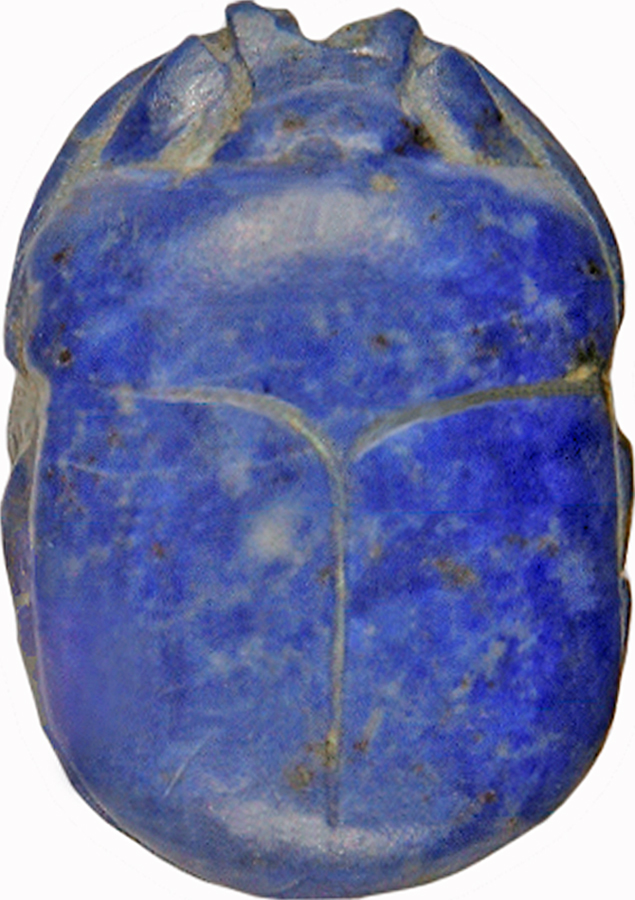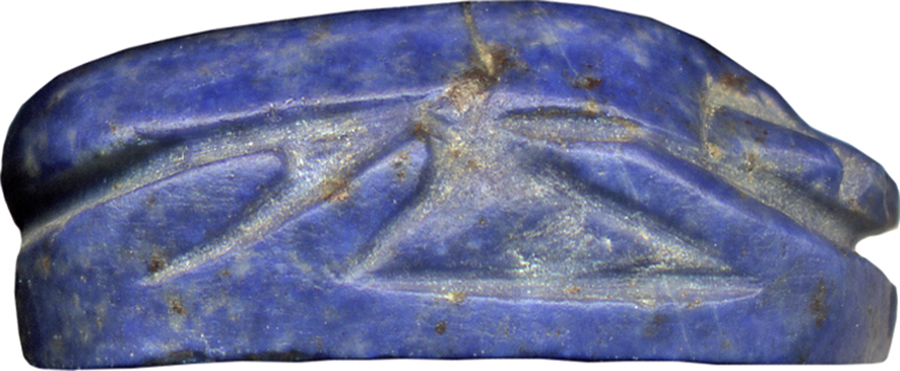Uninscribed Scarab
(Ancient Egypt and Nubia )
This lapis lazuli scarab has a flat underside with no bottom design. The top of the scarab is carved with a detailed design with very fine incised lines, regular line flow, and well-balanced proportions. The extremeties are a little heavy. The workmanship of the piece is excellent, and it is elaborately made.
This scarab functioned as an amulet with renewal connotations. It was originally mounted, possibly as part of a ring. The deep blue color, which refers to the heavens, the primeval flood, and the Nile, symbolizes creation and recreation. It supports the general renewal connotation of the scarab.
Provenance
Provenance (from the French provenir, 'to come from/forth') is the chronology of the ownership, custody, or location of a historical object. Learn more about provenance at the Walters.
Henry Walters, Baltimore, 1929 [mode of acquisition unknown]; Walters Art Museum, 1931, by bequest.
Exhibitions
| 1982 | 3000 Years of Glass: Treasures from The Walters Art Gallery. The Walters Art Gallery, Baltimore. |
Conservation
| Date | Description | Narrative |
|---|---|---|
| 10/8/1974 | Treatment | cleaned |
Geographies
Egypt (Place of Origin)
Measurements
H: 1/4 x W: 1/2 x L: 11/16 in. (0.7 x 1.2 x 1.7 cm)
Credit Line
Acquired by Henry Walters, 1929
Location in Museum
Not on view
Accession Number
In libraries, galleries, museums, and archives, an accession number is a unique identifier assigned to each object in the collection.
In libraries, galleries, museums, and archives, an accession number is a unique identifier assigned to each object in the collection.
42.227






